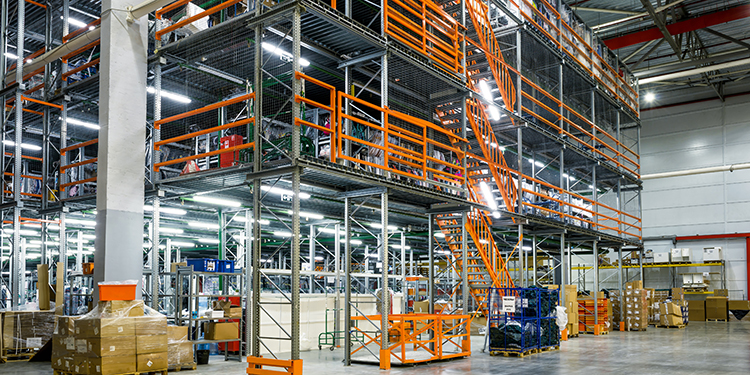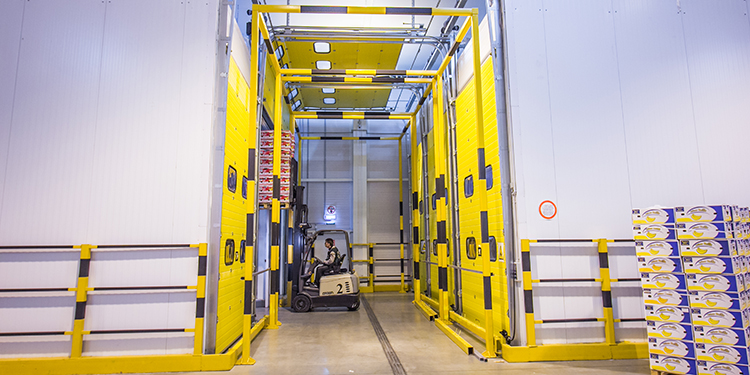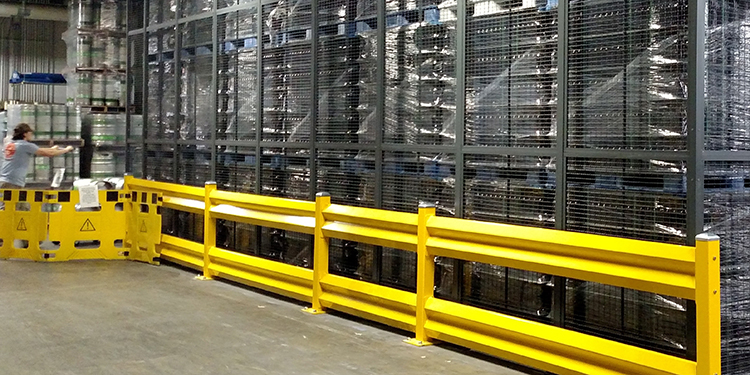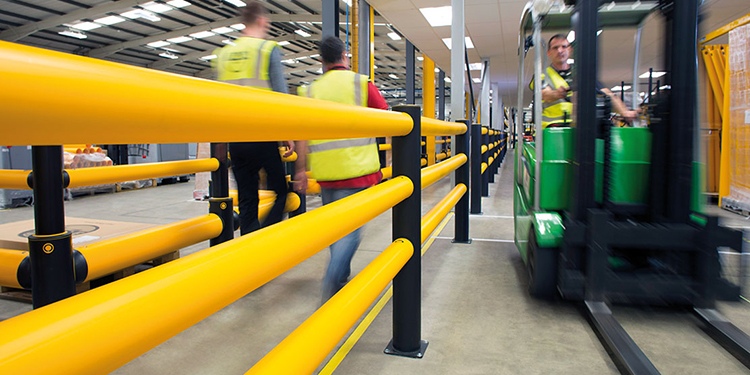Pedestrian And Traffic Barriers: Where They Should Be Used And ...
Installing pedestrian and traffic barriers within warehouses, distribution centers, factories, manufacturing facilities, and other industrial buildings protects personnel from hazards such as vehicles and other dangerous equipment. With these barriers or guardrails in place, a physical separation is created to ...
Can’t Find An Off-The-Shelf Guarding Solution? Here’s Why Custom Is ...
A quick search online for virtually any type of protective guarding — guardrails, bollards, safety gates, kickplates, steel mesh, safety netting, dock barriers and more — will quickly yield a number of standard, off-the-shelf products. Most of these systems and ...
How To Plan Facility Guarding That Accommodates Vehicle Traffic
With a number of today’s warehouses, distribution centers, and manufacturing facilities adding flexible, scalable load transport equipment to better meet customer demands, it’s become increasingly important to install protective guarding. Whether an operation is brand-new, greenfield construction or the reconfiguration ...
How To Identify Areas Where Guardrails May Be Needed
Installing fixed protective barriers such as guardrails creates a physical separation between workers and potential impact hazards — such as vehicles, forklifts carrying loads, and mobile material handling equipment. Likewise, they can be installed to protect inventory, structures, equipment and ...
How To Select The Right Guardrail For A Specific Application
Guardrails and other protective barriers are intended to improve safety in distribution centers, warehouses, or manufacturing facilities by creating a physical separation between personnel and hazards such as materials handling equipment or vehicles. They can also be used to protect ...
Ground-Level Protective Curbs Stop Forklift Penetration Damage
As forklifts move around a facility — either with or without a load — their forks are typically raised 2 or 3 inches above the floor. This gives the operator a less obstructed view of the route ahead; however, the ...







